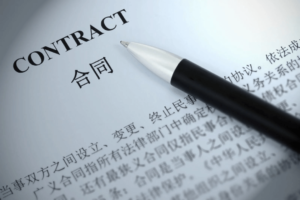In the dynamic landscape of global commerce, the importance of intellectual property (IP) protection cannot be overstated—particularly in China, where the economic stakes are high and innovation is rapid. Securing a design patent in China is a critical step for businesses looking to protect the unique visual attributes of their products. This article offers a comprehensive guide on how to effectively protect your design in China, incorporating the significance of Non-Disclosure, Non-Use, and Non-Circumvention (NNN) agreements, the necessity of contracts verified in Chinese, and other key considerations for a robust IP strategy.
Table of Contents
ToggleUnderstanding Design Patents in China
Design vs. Utility Patents
Design patents serve a critical role in the realm of intellectual property protection by safeguarding the visual or aesthetic aspects of a product. This includes its shape, configuration, surface ornamentation, and overall visual appeal. These patents are distinct from utility patents, which are concerned with the functional and technical aspects of an invention, such as how it operates, is constructed, or is manufactured. Utility patents address the underlying innovations that make a product work, while design patents protect the way a product looks.
One of the key advantages of design patents is the relative speed with which they can be obtained and enforced compared to utility patents. The process for obtaining a design patent typically involves a less complex examination of the novelty and non-obviousness of the design, allowing for a quicker path to protection. This expedited process can be particularly beneficial for industries where trends and consumer preferences evolve rapidly, making the timely protection of a product’s appearance crucial.
Moreover, design patents offer an effective tool for enforcing rights against infringers. Because the protection focuses on the aesthetic appearance, it can be easier to identify and take action against products that copy or closely mimic the protected design. This makes design patents a highly attractive option for businesses and individuals looking to safeguard the unique visual characteristics of their products, ensuring that they maintain a competitive edge in the market by preventing others from profiting from their innovative designs.
Eligibility and Application Essentials
In the People’s Republic of China, securing a design patent requires meeting stringent criteria that emphasize the novelty, originality, and visual appeal of a design. This legal framework ensures that only designs that are genuinely innovative and capable of influencing consumer choices are protected under patent law. To qualify for a design patent, the design in question must not only be new, meaning it has not been disclosed to the public anywhere in the world before the application date, but it must also possess a distinctive originality that sets it apart from existing designs. Furthermore, it should exhibit an aesthetic quality that has the potential to draw consumer interest, thereby adding value to the product and enhancing its marketability.
The application process for obtaining a design patent in China is meticulous and demands comprehensive preparation. Applicants are required to compile and submit a robust package of documentation that effectively communicates the unique characteristics of their design. This includes a detailed description that goes beyond mere functionality to articulate the aesthetic features and the creative thought process behind the design. The description must highlight what makes the design novel and how it contributes to the overall visual appeal of the product.
In addition to the textual description, the submission must be accompanied by precise and high-quality illustrations that accurately capture the essence of the design. These illustrations play a crucial role in the review process, as they allow the examiners to assess the distinctiveness and originality of the design in detail. The drawings or photographs must be clear and detailed enough to showcase all relevant features of the design, including its contours, patterns, colors, and texture, as applicable. These visual representations must be presented from multiple angles to ensure a comprehensive understanding of the design’s three-dimensional qualities.
The thoroughness of the documentation is vital, as it forms the basis upon which the Chinese Intellectual Property Office evaluates the design’s eligibility for patent protection. The process underscores the importance of not only demonstrating the novelty and aesthetic appeal of the design but also ensuring that it is meticulously documented to meet the stringent requirements set forth by the patent office. This rigorous approach to design patent applications aims to foster innovation and protect the intellectual property rights of designers and businesses, ensuring that they can capitalize on the uniqueness of their designs in a competitive market.
Leveraging NNN Agreements and Verified Contracts
The Role of NNN Agreements
Within the intricate landscape of intellectual property protection in China, Non-Disclosure, Non-Use, and Non-Circumvention (NNN) agreements hold paramount importance, especially for foreign entities looking to safeguard their designs before securing a patent. These legal instruments are specifically designed to create a binding commitment from Chinese manufacturers, suppliers, and business partners, ensuring that they neither disclose nor utilize your proprietary designs for their own benefit, nor circumvent your business interests by leaking your innovative ideas to competitors or entering into direct competition against you.
NNN agreements offer an essential layer of security during the delicate phases of manufacturing or business negotiations. Before a design is officially patented, it is at its most vulnerable, susceptible to being copied or exploited without legal recourse. By executing a well-drafted NNN agreement, inventors and businesses can significantly mitigate these risks. These agreements act as a deterrent against potential intellectual property theft, providing a legal framework that can be swiftly enforced should any breaches occur, thereby protecting the original work and investment put into developing unique designs.
Importance of Chinese-Verified Contracts
In the context of China, where legal and business practices have their unique characteristics, the drafting and enforcement of contracts can be particularly challenging for foreign entities. It is of utmost importance that all contracts, especially those pertaining to intellectual property protection such as NNN agreements, are drafted in Mandarin Chinese and meticulously tailored to align with the People’s Republic of China’s legal system, regulations, and jurisdictional nuances. This ensures that the contracts are not only understood by all parties involved but also that they are fully compliant with local laws, significantly enhancing their enforceability.
Contracts that are verified and drafted in Chinese provide a robust legal foundation, minimizing ambiguities and potential for misunderstandings that could arise from language differences. Moreover, in the event of a dispute, Chinese courts and arbitration panels are more likely to favor contracts that are in the local language and compliant with local laws, thereby facilitating a smoother legal process. And if you do not have a verified Chinese language version but only an English version, the court will translate the contract into Chinese. Poor translastion by the court translators will result in lower inforceability in Chinese and contracts that are not effective.
Careful attention to the legal and linguistic aspects of contract drafting in China can drastically reduce the risk of intellectual property infringement and offers businesses a stronger position from which to seek legal recourse. In essence, Chinese-verified contracts are not just a formality but a strategic necessity for protecting your intellectual property rights and ensuring that your innovations receive the protection they deserve in a highly competitive and complex market.
Protecting and Enforcing Your Design Patent
Upon successfully navigating the application process and being granted a design patent in China, the patent holder is afforded a period of protection that extends for 15 years from the date of application. This timeframe provides a significant window in which the patent holder can exclusively capitalize on the aesthetic features of their design, reaping the benefits of their innovation and creativity in the marketplace. However, obtaining a design patent is merely the first step in a continuous journey of protecting and enforcing the exclusive rights it confers.
The effective enforcement of a design patent in China necessitates a proactive and vigilant approach to monitoring the market. This involves keeping a watchful eye on the production, distribution, and sale of products that may infringe upon the patented design. The vastness and complexity of the Chinese market, combined with the rapid pace of product development, can pose challenges to patent holders. However, regular and thorough market surveillance is crucial for identifying potential infringements early on. This may involve online searches, monitoring competitors’ product lines, attending trade shows, and even employing specialized services that track patent infringements.
Once a potential infringement is identified, it is imperative for the patent holder to be prepared to pursue legal actions promptly and decisively. The legal framework in China offers a dual path for the enforcement of design patents, comprising both administrative and judicial remedies, each with its own set of advantages and strategic uses.
Administrative remedies involve filing a complaint with the local intellectual property office, which has the authority to conduct investigations and impose penalties on infringers. This route is often quicker and less costly than court proceedings, making it an attractive option for resolving clear-cut cases of infringement. Administrative actions can lead to the cessation of infringing activities, fines for the infringer, and even the destruction of infringing goods.
Judicial remedies, on the other hand, entail filing a lawsuit in a Chinese court. This approach is generally more suitable for complex cases or when seeking substantial damages. The judicial process can grant a wider range of reliefs, including injunctions to prevent further infringement, monetary compensation for damages, and legal costs. Although pursuing litigation can be more time-consuming and expensive, it often results in a more definitive resolution to the dispute and can have a strong deterrent effect against future infringements.
Effectively deterring infringement and protecting your design in China thus requires a comprehensive strategy that includes diligent market monitoring and a readiness to utilize both administrative and judicial remedies. This dual approach can provide a robust defense against unauthorized use of your design, ensuring that your intellectual property rights are respected and that your innovation continues to provide a competitive edge in the market.
Application Strategies for Success
Undertaking comprehensive research to ascertain the novelty and distinctiveness of your design is a cornerstone in laying the groundwork for a successful patent application in China. This exhaustive investigation is not merely a cursory step but a critical due diligence process that involves scouring existing patents, design registries, and market offerings to ensure that your design stands out from what has already been disclosed to the public. By identifying any potential similarities or precedents, you can better position your design as unique, significantly boosting the likelihood of your patent application’s approval. This step is imperative not only for the sake of meeting the legal requirements for novelty but also for fortifying your design’s claim to originality, thereby establishing a stronger case for its protection under patent law.
In parallel with thorough research, the preparation of clear, concise, and detailed illustrations of your design is equally fundamental. These illustrations serve as a visual representation of your design’s unique features, capturing its shape, configuration, pattern, or ornamentation from multiple perspectives. High-quality drawings or photographs are essential for conveying the aesthetic nuances of your design, providing patent examiners with a clear understanding of what you are seeking to protect. The precision and clarity of these illustrations cannot be overstated, as they form the basis upon which the uniqueness and scope of your patent protection are evaluated. Properly executed, they delineate the boundaries of your design patent, aiding in the prevention of infringement by making it easier to identify unauthorized reproductions.
The complexity of navigating China’s intellectual property (IP) landscape, with its specific legal requirements and procedural nuances, underscores the value of employing a patent agent or attorney who specializes in this field. An experienced patent agent brings to the table not only a deep understanding of the legal framework governing design patents in China but also a familiarity with the practicalities of the application process. This expertise ensures that your application complies with all procedural and substantive requirements, from the drafting of the design description to the submission of requisite documentation. A seasoned patent agent can also offer strategic advice on how to strengthen your application, such as suggesting modifications to your design that enhance its distinctiveness or advising on the best approach to respond to any objections raised by the patent office.
Furthermore, a patent agent with experience in China’s IP environment can provide invaluable guidance on navigating potential challenges and leveraging procedural strategies to expedite the examination process. Their insights into past cases and understanding of current trends in patent law can inform a more tailored and effective patent strategy, enhancing the prospects of your application’s success.
The path to securing a design patent in China is multifaceted, involving meticulous research, the preparation of precise illustrations, and strategic legal guidance. Each of these steps plays a vital role in ensuring that your design is adequately protected, highlighting the importance of attention to detail and expert assistance in navigating the complexities of the patent application process.
Conclusion
Protecting your design in China extends beyond the application for a design patent. It encompasses strategic use of NNN agreements to secure your interests before patent approval, and the implementation of contracts verified in Chinese to ensure they are enforceable under local laws. These measures, combined with a well-navigated application process and diligent enforcement, form a comprehensive strategy for safeguarding your intellectual property in one of the world’s most challenging markets. By adopting a proactive and informed approach to IP protection, businesses can secure their innovations and maintain a competitive edge in China’s vibrant economy.
FAQ: Protecting Your Design in China
Q1: What is the difference between a design patent and a utility patent in China?
A1: A design patent protects the aesthetic aspects of a product, such as its shape, configuration, or ornamentation, whereas a utility patent covers the functional and technical features of an invention. Design patents are generally quicker to obtain and easier to enforce compared to utility patents.
Q2: What are the eligibility criteria for a design patent in China?
A2: To be eligible for a design patent in China, your design must be novel and original, meaning it has not been publicly disclosed before the application and significantly differs from existing designs. Additionally, the design must have an aesthetic appeal that can attract consumers.
Q3: Why are NNN agreements important in China?
A3: NNN (Non-Disclosure, Non-Use, Non-Circumvention) agreements are crucial in China for protecting your design before obtaining a patent. They legally bind Chinese manufacturers and partners to not disclose, use, or circumvent your design, offering a layer of security during the manufacturing or negotiation phases.
Q4: Why should contracts be verified in Chinese for them to be effective in China?
A4: Contracts verified in Chinese and tailored to comply with Chinese laws and jurisdiction are more enforceable in China. This ensures that the agreements are recognized under local legal standards, providing a stronger basis for legal recourse in case of IP infringement.
Q5: How can you enforce your design patent rights in China?
A5: To enforce your design patent rights in China, you must be vigilant in monitoring the market for potential infringements and ready to take legal action when necessary. In China, design patent owners can pursue both administrative and judicial remedies to protect their rights.
Q6: How long is a design patent valid in China?
A6: A design patent in China is valid for 15 years from the filing date. It is important to keep track of the patent’s expiration date to ensure continuous protection of your design.
Q7: What are some tips for a successful design patent application in China?
A7: Conduct thorough research to ensure your design is unique and original, prepare clear and concise illustrations, and consider hiring a patent agent with expertise in China’s IP landscape to navigate the application process effectively.
Q8: How do clear and concise illustrations impact a design patent application?
A8: The quality of illustrations submitted with your application significantly impacts the assessment of your design’s uniqueness and originality. High-quality, detailed drawings that accurately depict the distinctive features of your design are crucial for a successful application.
Q9: Can a Chinese design patent be renewed after its expiration?
A9: No, a design patent in China cannot be renewed after its 15-year term expires. It is essential to strategically plan for your IP protection, considering the non-renewable nature of design patents.








